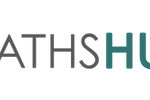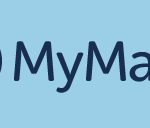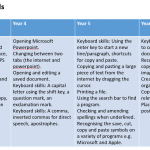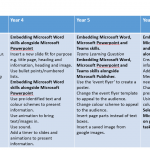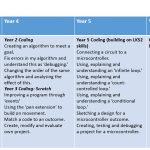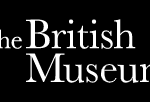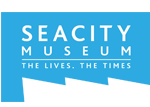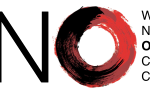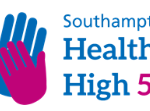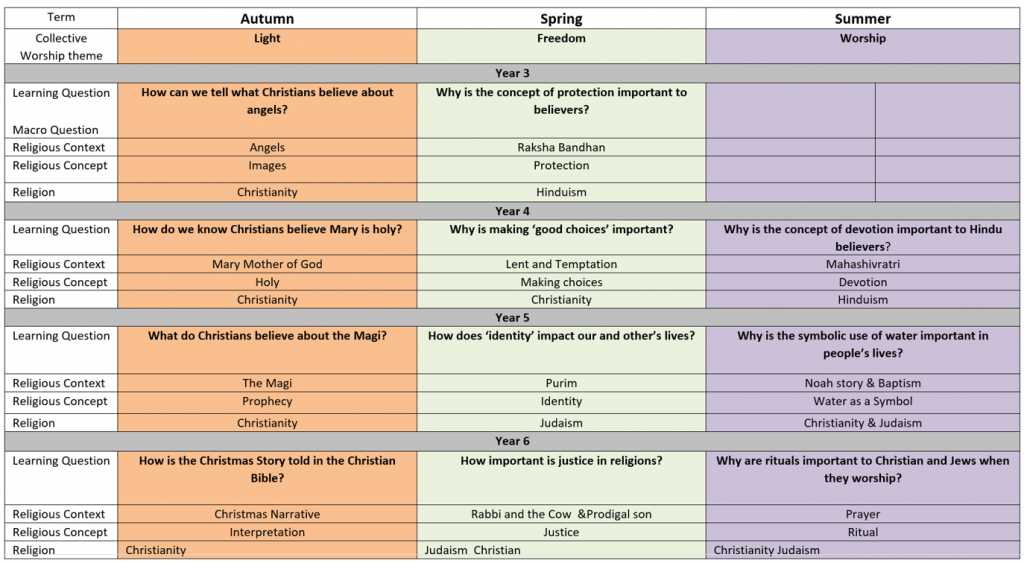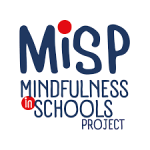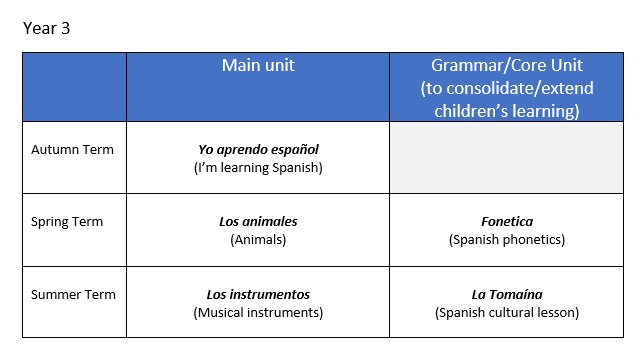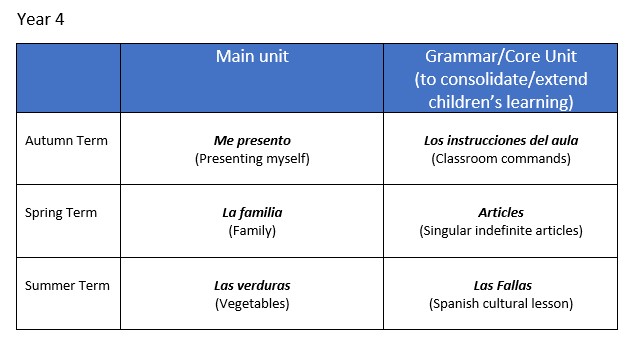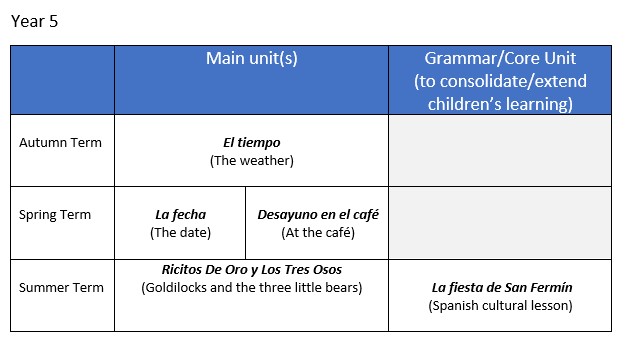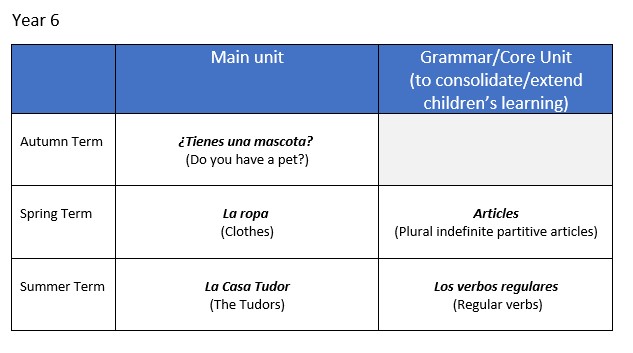Curriculum
At Mount Pleasant we have worked carefully to create a curriculum that meets the needs of our learners. We deliver the entire National Curriculum and all other statutory curriculum subjects, including:
National Curriculum & Statutory Subjects |
When and How it is Taught? |
| English | Taught daily each week |
| Maths | Taught daily each week |
| Science | Week long Learning Questions throughout the year (see curriculum overview) |
| Geography | 2 week long Learning Questions throughout the year (see curriculum overview) |
| History | 2 week long Learning Questions throughout the year (see curriculum overview) |
| Computing | Weekly digital literacy across the curriculum
Week long Learning Questions throughout the year (see curriculum overview) |
| Art and Design | Weekly mark making & manipulation
Week long Learning Questions throughout the year (see curriculum overview) |
| Design and Technology | Weekly mark making & manipulation
Week long Learning Questions throughout the year (see curriculum overview) |
| Physical Education | Weekly PE lessons |
| Music | Weekly music appreciation & singing
Week long Learning Questions throughout the year (see curriculum overview) Weekly Music fluency to learn an instrument |
| Languages | Weekly Spanish lessons |
| Personal, Social, Health Education | Weekly WISE (Well-being, Identity, Safety and Empowerment) lessons |
| Religious Education | Week long Learning Questions throughout the year (see curriculum overview) |
Learning Questions
In order to develop our pupils’ knowledge, skills and understanding, learning for some subjects (see the table) is organised as a week or 2 week long study. This is to immerse the children and enable them to focus on one area. By learning in this way, our pupils are supported to develop their vocabulary, know more and remember more. Each of these studies uses an overarching ‘macro’ Learning Question to engage the children in thinking about the learning. Within the study are ‘micro’ questions so that children understand each of the steps on their learning journey.
The partnership between parents and teachers is vital and here at Mount Pleasant Junior School, it has been identified as a strength: Home and School recognise the value and importance of education.
Parents are their children’s first teachers, so equipped with information and understanding about what your children are learning ; what key skills they need; and key concepts they need to understand, together, we can work to ensure that they receive their curriculum entitlement and achieve their potential.
Each child is unique and we know that one size does not fit all. Below we have provided a handbook which is focussed on the National Curriculum expectations for each year group. We support all pupils in our school to progress and attain, from different starting points and, as appropriate, with additional support. These handbooks are a guide to enable and support and complements our ongoing conversations with you and your child about their learning.
Please watch the film below to find out all about our Bibliotheca
Y3 Maths Addition and Subtraction Videos
Curriculum Subjects
Mount Pleasant Junior School – Our Text-led Approach to English Teaching
At Mount Pleasant Junior School, children will experience a rich and diverse range of literature, representing different authors, illustrators, genres and forms from different times, places and perspectives that will enable them to:
– Become confident, competent and committed independent readers;
– Engage and respond in a variety of ways, with regard to their maturity, preferences and experiences;
– See themselves reflected in what they read and to have high-quality opportunities to investigate and appreciate the lives of others vicariously;
– Explore different ethnic, social and cultural contexts broadening reading experience and building awareness of the world they live in;
– Meet literary challenges with stamina, curiosity and enquiry;
– Develop as inspired, motivated and accomplished writers.
In consideration of this, children’s literary encounters will include:
– Studies of high quality whole and part texts created by long-established and contemporary authors, illustrators and poets representing ethnic diversity, different themes and which invite/promote discussion, speculation, analysis, comparison, response and enjoyment;
– Studies of extracts that invite comparison, highlight possibilities and extend reading experiences and skills;
– Access to high quality illustrations that inform, challenge, engage developing children’s visual literacy (within fiction and information texts);
– Opportunities to compare different versions, forms and authors (through the use of different media where appropriate and relevant).
How?
Specific text choices are made and reviewed for each year group as a basis for the teaching of reading and many aspects of writing.
Specific text choices (to include film, poetry, journals, newspapers, extracts) are made to create the agreed read-aloud/shared reading curriculum for each year group.
Specific text choices are made to enable children to explore values and issues that are relevant to their lives now and in the future through a thematic approach.
Further reading is signposted, beyond the classroom, to enable children to discover and appreciate the relevance and richness of literature.
Resources, Partners and Approaches
The Science Curriculum at MPJS
At Mount Pleasant Junior School, Science is taught to ensure children have the opportunity to work and think like a scientist. We teach Science using a carefully considered spiral curriculum so that children have the opportunity to revisit and deepen their learning in biology, chemistry and physics. We have identified the significant concepts that all children need to know and remember. These are organised into specific scientific enquiries formulated around learning questions. They explore these questions for a sequence of lessons. Within our learning questions, we have identified a number of opportunities for children to have educational visits and visitors that act as a launchpad for learning and contextualise abstract concepts for them, for example, Year 5 visit Winchester Planetarium. We also have enrichment opportunities through our responsible roles and clubs such as Gardening Gang, Team Wilder and Healthy Eating. We aim for children to leave us with both knowledge and skills to understand themselves and the world around them.
Click on the icon below to see our Science Learning Questions
Science Learning Questions
Learning Journeys
Forces
| To understand how forces work, what affects them and how they are used in our everyday lives? | ||
| – Friction
– Air resistance – Water resistance – Gravity – Streamlining |
Scientists:
– Newton – Galileo |
– Magnets
– Levers – Pulleys – Gears |
Earth and Space
| To understand what is beyond our planet and how it affects our days. | ||
| Movement of the Solar System
– Geocentric – Heliocentric – Planets |
Understanding the effects of the Earth’s movement
– Night and day – Shadows – The sun |
Phases of the moon
– Lunar eclipse |
Rocks
| To know about different kinds of rocks and fossils and how they are formed. | ||
| Formation of rock | Types of rock
– Igneous, sedimentary and metamorphic |
Fossils
– How fossils are made – Mary Anning |
Light and Sound
|
To understand how light and sound behaves and how it helps us to see and hear. |
|||
| – Light sources
– Sound sources – Light and darkness |
– How light travels
– Reflection, refraction – How sound is made and travels – Vibration |
Properties of materials:
– Shadows – Insulating sound |
– Pitch and volume |
Electricity
| To know about how electricity travels, how it can be affected and how we can be safe around it. | ||
| Circuits
– Components – Symbols – Diagrams – voltage |
Materials
– conductors and insulators – resistance |
Sources of electricity
– safety – appliances – weather |
States of Matter
|
To know the difference between solids, liquids and gasses and how they can be changed. |
|
| – Solids, liquids and gasses
– Movement of molecules |
– Changes in state
– Water cycle – Reversible and irreversible |
Resources, Partners and Approaches
Progression of Skills
| Ongoing | Mark Making Progression | Colour Theory Progression |
| Blind contour drawing
Revisit elements of shape and tone and texture Self portrait at the beginning of each year
|
Mixed Media:
|
Mixed Media:
|
| Prior knowledge (from KS1):
Correctly hold a drawing tool Begin to control the types of marks made Tone
Shape and Texture
Perspective
Proportion
|
Prior knowledge (from KS1):
Colour wheel
|
Learning Questions
| Year 3 | Year 4 | Year 5 | Year 6 |
| What story do cave paintings tell? | Can repeating patterns be beautiful? | What makes Anthony Gormley’s work popular? | How can I read a portrait? |
| What is etching? (within the context of ancient art) | Should paintings be realistic? | Modern art | Why is Vermeer considered a master of art? |
| How can I visit an art gallery? | What was pioneering about Zaha Hadid? | How did Renaissance artists work? | Can abstract art convey emotion? |
Resources, Partners and Approaches
How Computing is taught at Mount Pleasant Junior School
At MPJS computing is taught in a spiral curriculum composed of discrete weekly computing sessions and Learning Question units. The aims of this are to cover the National Curriculum for computing, to ensure that children have the levels of Digital Literacy to be able to function in the modern world and know how to keep themselves safe online. This intends to ensure pupils start their secondary schooling equipped with all the foundations skill necessary in coding and Digital literacy. The Learning Question units allow pupils to become fully immersed in specific areas of computing. As part of our responsible roles in school, Digital Leaders contribute to the success of units by supporting their peers. During their time at MPJS, children will become proficient in using a range of Microsoft Office software. The aim by year 6 is that children will be able to select and use the appropriate programme for a purpose.
We use Teach Computing to deliver our coding and programming Learning Questions. This ensures that children are building on basic coding skills in a progressive way. Coding is taught through a variety of programmes such as Scratch Junior and Logo. Coding is taught as part of the year 6 transition to seconadary project and is supported by secondary specialist teachers.
Online safety underpins all of our computing sessions and links with our RSHE curriculum. The Curriculum objectives are taken from the UK Council for Internet Safety ‘Education for a Connected World’ framework. This is divided into eight strands:
- Self-image and identity
- Managing online information
- Online relationships
- Health, well-being and lifestyle
- Online reputation
- Privacy and security
- Online bullying
- Copyright and ownership
Computing Progression of Skills
| Year 3 | Digital Literacy | Coding | |
| Autumn | IT Fundamentals
|
Microsoft Word
|
|
| LQ: Branching Databases | |||
| Spring | LQ: Animation |
Session 1 and 2: Bee Bots Session 3 – 12: Year Programming animations through Scratch Junior (Teach Computing unit yr 1) |
|
| Summer | IT Fundamentals
|
Microsoft Word
|
|
| Year 4 | Digital Literacy |
Coding | |
| Autumn | Session 1 -4: Understanding algorithms
Session 5 – 14: Year 3 Programming B: Events and actions in programs |
||
| Spring | IT Fundamentals
|
Embedding Microsoft Word skills alongside Microsoft Powerpoint
|
LQ: Programming A: Repetition in Shapes
LQ: Programming B: Repetition in Games |
| Summer | IT Fundamentals
|
Embedding Microsoft Word skills alongside Microsoft Powerpoint
|
|
| Year 5 |
Digital Literacy |
Coding | |
| LQ: Using Teams | |||
| Autumn | IT Fundamentals
|
Embedding Microsoft Word, Microsoft Powerpoint and Teams skills.
|
|
| Spring | Year 5 Programming Unit A: Physical Computing | ||
| Summer | IT Fundamentals
|
Embedding Microsoft Word, Microsoft Powerpoint and Teams skills alongside Microsoft Publisher.
|
LQ: Programming Unit B: Selection in Quizzes |
| Year 6 | Digital Literacy | Coding | |
| Autumn | IT Fundamentals
|
Embedding Microsoft Word, Microsoft Powerpoint, Teams and Microsoft Publisher skills alongside Microsoft Excel
|
|
| Spring | LQ Programming A: Using Variables in Games
LQ: Music and Computing |
||
| Summer | IT Fundamentals
|
Selecting the most appropriate Microsoft Office program based on purpose and audience of task. | LQ Cantell Computing Transition Project |
Learning Questions
| Year 3 | Year 4 | Year 5 | Year 6 |
| How do stitches join and decorate? | How can I create patterns on fabric? | What is bread and how do we make it? | How can I reuse textiles? |
| How can I use wood to make a picture frame? | How can I make bread with oil? | How can mechanisms create movement? | What leavens bread? |
| How can I make flatbreads? | How can I make a moving toy vehicle? | How can I use knots? | How can I make a radio? |
How Geography is taught at Mount Pleasant Junior School
At MPJS, we enable our children to become skilled geographers through an enquiry- based curriculum that utilises our diverse coastal & river-bound city. Worthwhile enrichment opportunities act as a launch-pad for learning, with meaningful fieldwork opportunities that explore both the impact of humans upon the environment and vice versa, with both urban and river studies.
Within our curriculum, children have opportunities to be immersed in geographical learning through carefully sequenced, cumulative and robust learning questions, which both build on prior knowledge and deepen understanding of geographical concepts. This immersion, followed by opportunities to deepen and revisit, allow children to develop a strong understanding of geographical language and subject-specific vocabulary, as well as to know more and remember more. Learning is couched in dialogue which encourages rich discussion and analysis of key themes to establish a deep understanding of locational and place knowledge and human and physical processes. Acquisition of this substantive knowledge is facilitated by a curriculum that addresses geographical concepts of place, space, scale, interdependence, cultural awareness and diversity, environmental impact and sustainability. Children are competent to carry out geographical enquiries and are can apply skills in observing, collecting, analysing, evaluating and communicating geographical information. They are able to create written narrative and analyses, referencing similarities, differences and changes and utilising a variety of sources, such as maps, globes, atlases, aerial photographs and images.
Each learning question and year group builds on the geographical learning journey of the previous years, both in chronology and in the development of geographical skills and processes, so that our children are ready for KS3 and beyond and are imbued with a sense of the complexity and wonder of our world and the diversity of cultures within it.
Learning Journey
History at Mount Pleasant Junior School
What is unique about studying history?
History is far more than facts and dates. Through the study of the past, we learn about how the world has been shaped, both here and abroad, through historically significant periods, which may last a few hours, as in the sinking of the Titanic, or span hundreds of years, such as the Roman occupation of Britain.
Historical enquiry allows for understanding and exploration of causation and consequence, as well as chances to compare similarities and differences critically. By also considering change and continuity, we are able to make connections, draw contrasts, analyse change, and frame historically – valid questions. Within history, we come to understand the use of evidence and the rigorous process that surrounds historical evidence. It enables us to understand how contrasting arguments can exist.
What is the purpose of the study of history?
A high-quality history education will help pupils gain a coherent knowledge and understanding of Britain’s past and that of the wider world. It should inspire pupils’ curiosity to know more about the past. Teaching should equip pupils to ask perceptive questions, think critically, weigh evidence, sift arguments, and develop perspective and judgement. History helps pupils to understand the complexity of people’s lives, the process of change, the diversity of societies and relationships between different groups, as well as their own identity and the challenges of their time.
What does the study of history look like at MPJS?
At MPJS, we enable our children to become skilled historians through an enquiry- based curriculum that utilises our historically- rich city. Worthwhile enrichment opportunities act as a launch-pad for learning, with visits to the local area (such as Sea City Museum), as well as further afield (for example, Fishbourne Palace and Hampton Court).
Within our curriculum, children have opportunities to be immersed in historical learning through carefully sequenced, cumulative and robust learning questions, which both build on prior knowledge and deepen understanding of historical concepts. This immersion, followed by opportunities to deepen and revisit, allow children to develop a strong understanding of historical language and subject-specific vocabulary, as well as to know more and remember more. Learning is couched in dialogue which encourages rich discussion and analysis of key themes to establish a deep understanding of social, political and religious fields of study. Key themes of society, civilisation, legacy, governance (changing power) and monarchy underpin substantive knowledge and run parallel with historical concepts of change and continuity, causation and consequence, similarity & difference and historical significance. Children are able to apply their knowledge and skills to create written narrative and analyses, referencing primary and secondary sources.
Each learning question and year group builds on the historical learning journey of the previous years, both in chronology and in the development of historical skills and processes, so that our children are ready for KS3 and beyond.
Learning Questions
Click on the icon below to view our History Learning Questions
History Learning Questions
Resources, Partners and Approaches
Learning Journey
| Current Music Provision | ||
| Aspect of music | Content | Continued support from Southampton Music Hub to ensure that the learning progressive and will build on prior knowledge. |
| Learning Question weeks
– 3 x 1 week blocked units a year with the exception of year 4 who do a two week block of instrument lessons
|
Starting point for years 3, 5 and 6 is soundscapes | -Continued support from Southampton Music Hub to ensure that the learning progressive and will build on prior knowledge. |
| Music Assemblies
-Whole school -Weekly |
Singing lesson:
-Focus on using the voice as an instrument -Includes a vocal warm up and learning a wide range of songs Music appreciation: -Listen to a piece of music from a wide range of times and places -Explore the effect of the music on the listener -Explore the musical dimensions (tempo, pitch, dynamics, structure, timbre, texture) -Embed use of musical vocabulary |
-Planning for music assemblies and record of music used |
| Choir
-30 minutes weekly -Year 5 and 6 |
|
-Move to more part singing, ability to keep part and consistently sing in tune.
-Take part in massed choir events with the Music Hub, Platinum Jubilee Celebrations |
| Brass Tuition
-1 hour weekly after school -Year 3,4,5 and 6 -20 pupils -Tuition provided by a specialist teacher |
-Care of instrument
-Technique for playing -How to read music notation on a stave |
– Tuition in |
| Enrichment opportunities | WNO
Theatre – WNO Artsmark Partnership with MAST |
|
Content of music appreciation assemblies summer 2021
| Music | Genre/Instrument | Learning Focus |
| In the Mood – Glenn Miller | Big Band Swing | Brass Instruments
Pitch |
| Acrobat – | Brass Band | Trombone and its slide
Pitch and Tempo |
| Redemption song – instrument featuring the Kaneh Mason family | Popular music
String family |
Strings and Piano
Rhythm and steady beat |
| Two Reels | Violin (fiddle)
British Folk Music |
Tempo of the different pieces
Pitch |
| The Little Train of Caipira | Orchestral Music/Samba instruments | Creation of a soundscape
Tempo |
| Ravi Shankar – symphony | Indian Music
Sitar and orchestra |
Melody (raga)
Rhythm (Tala) |
Content of music appreciation assemblies autumn 2021
| Music | Genre/Instrument | Learning Focus |
| Carnival of the Animals – featuring the Kaneh Mason family – Lion | Orchestral Music – piano and strings | Tempo
Fanfare Scales to create the roar |
| Carnival of the Animals – featuring the Kaneh Mason family – Elephant | Orchestral Music – piano and double bass | Pitch
Tempo Melody |
| Carnival of the Animals – featuring the Kaneh Mason family – Aquarium | Orchestral Music – piano, strings, flute and glass harmonica | Pitch
Tempo Melody Creation of mood related to year 6 learning question |
| Adiemus – Karl Jenkins | Voice – and use of choir | Use of the voice as an instrument |
| Allegri’s Misere | Voice – choral music | Pitch
Unison and Harmony |
| Mozart’s Piano Concerto | Orchestra and piano | Texture
Dynamics |
Resources, Partners and Approaches
RE Curriculum
At Mount Pleasant Junior School, Religious Education is taught in accordance with the legal requirements of Living Difference III – the Agreed syllabus for schools in Hampshire, Portsmouth, Southampton and the Isle of Wight. This Document is the statutory framework, which defines the matters, skills and processes that need to be taught. We follow a common enquiry cycle, enabling pupils to become familiar with asking and answering questions, always beginning with their own experiences of a concept before contextualizing it into another world religion.
The curriculum is delivered through Learning Questions; these are concept-led and contextualised through specific religions. As per the syllabus of Living Difference III, pupils learn about Christianity and two world religions across Key stage 2 (lower key stage 2, Christianity and Hinduism and Upper stage 2, Christianity and Judaism). We draw upon our diverse school community to build knowledge of a range of religions and give pupils the opportunity to make sense of the world they live in.
Rationale
Religious education can provide a rich and wide range of experiences inside and outside the classroom, which give children opportunities to develop concepts and skills that will help them to make sense of their own experiences and beliefs, and to understand the beliefs and practices of members of faith communities through open, fair-minded enquiry. This entails enabling children to interpret and respond to a variety of concepts, beliefs and practices within religions and to their own and others’ cultural and life experiences. This takes the form of encountering religious stories, festivals, artefacts, places of worships and beliefs. Indoctrination and conversion are not part of the educational process and therefore have no place in religious education. Religious education is an educational subject in its own right, taught within an educational framework.
Assessment
| End of Year 4 | |
| Commuicate | Children can describe their own responses to the human experience of the concepts studied. |
| Apply | They can describe examples of how their responses are, or can be, applied in their own lives and the lives of others. |
| Enquire | They can describe key concepts that are common to all people as well as those that are common to the lives of many living a religiuos life (A and B concepts) |
| Contextualise | They can describe how these concepts are contextualised within some of the beliefs and/or practices and/or ways of life people living in a religious life in the religion studied. |
| Evaluate | They can evaluate human experience of the concepts by describing their value to people and through dialoguing with others can recognise, identify and describe some issues raised. |
| End of Year 6 | |
| Commuicate | Children and young people can explain their own response to the human experience of the concepts explored. |
| Apply | They can explain examples of how their responses to the concepts can be applied in their own lives and the lives of others. |
| Enquire | Children and young people can explain key concepts that are common to all people (A concepts) asa well as those that are common to many religions (B concepts) and they can describe some key concepts that are particular to the specific religions studied (C concepts) |
| Contextualise | They can explain how these concepts are contextualised within the beliefs and/or practices and/or the ways of life people living in a religious life in the religions studied. |
| Evaluate | They can evaluate the concepts by explaining their value to people living a religious life by drawing on examples. Dialoguing with other children will enable them to discern for themselves and so identify and describe in increasingly complex ways some of the issues they raise. |
Learning Journey
Please click on the link below to read our Relationships, Sex and Health Policy
Mindfulness
Our mindfulness lessons are taught by members of our teaching staff who are certified Mindfulness in Schools Teachers. Children in Year 4 learn paws b and children in Year 6 are supported with their SATs and transition to secondary school through .breathe.
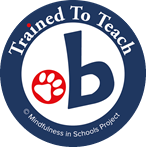
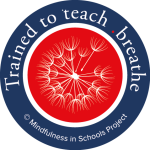
Click on the links below to find out how the Mindfulness curriculum and PSHE are connected.







